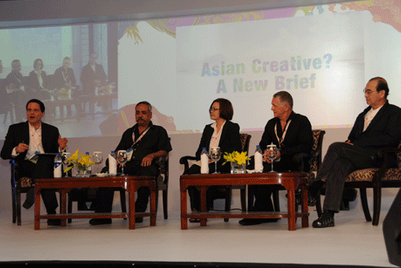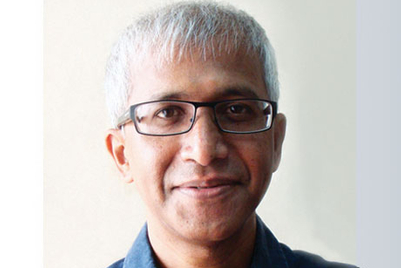
In the 1920s, Vladimir Vernadsky (1863-1945), created a theory of the Earth's development: the noosphere is the third stage in the earth's development, after the geosphere (inanimate matter) and the biosphere (biological life).
Pierre Teilhard de Chardin (1881- 1955), French philosopher, paleontologist and Jesuit priest, built on the idea of the noosphere.
In the June 1995 issue of Wired, Jennifer Cobb Kreisberg said ‘Teilhard saw the Net coming more than half a century before it arrived.’
Teilhard imagined a stage of evolution characterized by a complex membrane of information enveloping the globe and fuelled by human consciousness.
It sounds a little off-the-wall, until you think about the Net, that vast electronic web encircling the Earth, running point to point through a nerve-like constellation of wires.
Of course, for those of you more historically minded, there was the concept of Indra’s Net (interesting that the name sounds similar to InterNet!), developed in the Mahayana Buddhist School in the 3rd century, which is over 1800 years ago!
What is Indra’s Net? (Check it out on the Net;-))
Kevin Kelly, editor of Wired, explains the next 5000 days of the web on TED in 2007.
He explains with hard facts why, “The web is one single machine, one single organism,” which sounds similar to what Chardin was saying.
At a very day-to-day level, it means our world of ideas and communication is impossibly interpenetrated: GreenPeace will hound the Tata Dhamra Port project on YouTube, NY Times will do a revealing piece on Anna Hazare and your personal information will be available to 30% of the world population (that’s the number of web users this morning!).
What else does all this mean to you and me, professionals in branding and communication?
- All communication must fulfill needs instantaneously: if you the user do not get a satisfactory answer from the TV set, you will reach out for your the Net on the tablet, and if you don’t get it there, to Twitter trends...your brand had better be where the consumer is.
- All brands are naked: whether you buy an expensive Nikon online or check out employment opportunities in Cognizant or a Gond painting on SaffronArt, you can check the claims that these brands make at comparison shopping sites from yahoo to Froogle.
There are no secrets.
In the future:
- All media will become one: Radio, TV, multiplex, chats, newspapers, music, sms...all delivered through the Net.
And the most stunning of all:
- There will be no mere consumers! We will all be consumers and producers at the same time (most of us already are!).
We will shape services (how many apps do you reject just by not using them? Google One?), products (Motorola used SecondLife.com to create a new mobile), logos and packaging (GAP retracted its new logo and Tropicana its new packaging, right?), hiring protocol (check out jobitorial.com or jobeehive to understand how employees rate their own companies)...which means we will be working in ad agencies but not creating advertising as much as creating connections.
You know where to connect with me, right;-)?


.jpg&h=334&w=500&q=100&v=20250320&c=1)


.jpg&h=334&w=500&q=100&v=20250320&c=1)










.jpg&h=268&w=401&q=100&v=20250320&c=1)
.png&h=268&w=401&q=100&v=20250320&c=1)
.jpeg&h=268&w=401&q=100&v=20250320&c=1)

